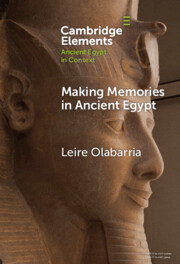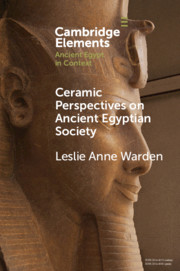Refine search
Actions for selected content:
5 results

Making Memories in Ancient Egypt
-
- Published online:
- 24 March 2025
- Print publication:
- 17 April 2025
-
- Element
- Export citation

Ceramic Perspectives on Ancient Egyptian Society
-
- Published online:
- 25 May 2021
- Print publication:
- 24 June 2021
-
- Element
- Export citation
Chapter 5 - The Early Church
- from Part II - The Early Latin West
-
-
- Book:
- The Cambridge History of Magic and Witchcraft in the West
- Published online:
- 05 March 2015
- Print publication:
- 02 March 2015, pp 148-182
-
- Chapter
- Export citation
10 - Old Kingdom, Middle Kingdom and Second Intermediate Period in Egypt
-
-
- Book:
- The Cambridge History of Africa
- Published online:
- 28 March 2008
- Print publication:
- 25 February 1982, pp 658-769
-
- Chapter
- Export citation
